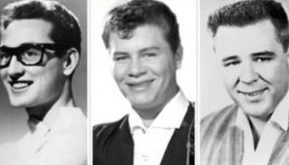The other day, bigwigs from IndyCar – notably Hulman and Co (IndyCar parent company) CEO Mark Miles and President of Competition Derrick Walker – spoke about how they wanted to bring back innovation and huge speeds to IndyCar racing, and to the Indianapolis 500.
What a great idea.
After years of the series running the same cars – the ungainly-looking Dallara IR-03 from 2003 – and the same engines – Honda was the sole supplier to the IndyCars from 2006 until 2011 – it sounds like things are starting to change.
I certainly wouldn’t mind these changes, and I had a few things on my mind.
For starters: Why has everyone run the same chassis? Every team is required to run the Dallara DW-12 chassis which, admittedly, is a tremendous race car – even if it’s a little ungainly itself – but why just limit the teams to just that?
What if King Hiro Matsushita’s Swift Engineering wanted to build a car? What if someone gave Adrian Reynard the capital to produce another car? How about Bob and Bill Riley, who produce the Riley Daytona Prototype? Why shut them out?
And why not allow the teams to build their own cars? There’s no reason that Roger Penske or Chip Ganassi should be shut out from building their own cars, just so long as they also build a car for whoever orders one, no matter who it is.
That’s just the small problem, though. The power plant almost inevitably becomes the source of consternation in these issues. Sometimes, there just aren’t enough to go around, such as right now, due to the closed engine regulations.
Right now, teams are only able to run the Chevy Indy V6 or the Honda HI12R V6 engines, something that has proven to keep teams out of competition; especially considering that these engines are in finite supply.
In the glory days, teams could run multiple types of engines. Most teams ran the 161 cubic inch purpose-built turbo Cosworth or Chevrolet Indy V8 engines – engines that were built for racing.
Some teams, however, ran a turbocharged engine based off of a production model – such as the 209 cubic inch Buick V6 engine. These engines were cheaper, more powerful and received more boost per the rules, but they were historically unreliable.
Some teams that ran on an even tighter budget ran a normally-aspirated stock block engine – such as a big-banger 355 cubic inch Chevrolet V8 engine – engines that were larger and louder than any other power plant, but, just like the Buicks, were unreliable.
Why not bring this back?
The turbocharged 2.2 liter Chevy and Honda engines can stay, but allow anybody to build an engine like this, provided that they can build an engine for whoever orders it. The only thing that these particular engines need is more boost.
If teams want to run other types of engines, however, there’s nothing wrong with that. For instance, let’s say Wisconsin home-improvement tycoon John Menard wants to build a new version of the stock-block Buick that he ran at Indianapolis during the ‘90s. There’s nothing wrong with that happening again. Sure, the engines will blow up spectacularly like they did back in the ‘90s, but they’ll be spectacular to watch.
Let’s say NASCAR driver Kasey Kahne wants to field his own car at Indianapolis for the 500. He buys two Reynards, but doesn’t want to deal with an expensive engine deal just for one race. With his World of Outlaw Sprint Car team, however, he’s got a few 410 cubic inch normally aspirated engines sitting around. What’s wrong with trying to stuff one of those beasts in an IndyCar and seeing how fast you can go?
Let’s say Spectator social media editor Joe Adgie hits the lottery and decides to go racing to exorcise the demons left by current editor-in-chief Jennifer Gleason and longtime advisor Dr. Pat Miller. Since he’d be a terrible race car driver, he decides to hire a sprint car driver and give him a chance of a lifetime. He purchases a Swift chassis and puts a turbocharged Volvo diesel five-cylinder engine in the back of it. The only thing that should be a problem here would be Adgie’s inevitable interviews, which would:
A.) be the new definition of “awkward,”
B.) be mandatory YouTube watching,
C.) make people wonder if Joe was just doing a Zach Galifianakis impersonation, or if he was acting like himself,
D.) likely make easily-confused racing journalists wonder if the frequently-referenced Dr. Miller was Joe’s advisor, or Dr. Jack Miller, the racing dentist, a highly-rubbished racing driver that ran in the IRL from 1997 to 2000.
But I digress.
I wonder if these misadventures of the idiotic and hilariously inept team owner could be chronicled in a future SPECRacing.
 The Spectator The independent student newspaper of Valdosta State University
The Spectator The independent student newspaper of Valdosta State University








Nice article. I think this is the BASIC for the series. I know its really expensive for now but we need to start sometime.
But first we need Indycar to allow ‘poor teams’ to still run the Dallara’s AeroKit. It looks that with the Chevy and Honda’s, the series will banish the current aerokit. And it already sucks. I would love to see 3 different cars on track and I think some teams will NOT HAVE the budget for a new kit.